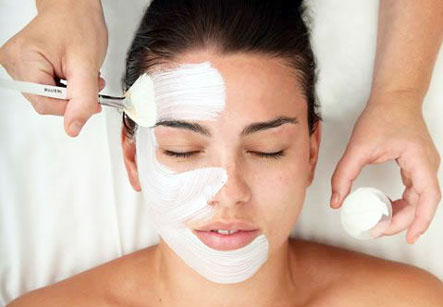Chemical Peels
Introduction
One of the least minimally invasive ways to enhance skin appearance is by chemical peeling, which also known as chemexfoliation or derma is peeling. This technique is used widely nowadays to rectify facial skin problems, but it is also used to improve the skin of neck and hand as well.
Chemical peels help to improve skin problems such as- rough skin and scaly patches, scars, sun-damaged skin, age and liver spots, fine lines and wrinkles, freckles, irregular skin pigmentation, acne or acne scars, etc. Derma peeling has found to be a well-accepted non-surgical cosmetic procedure.
Surgical Procedure
Chemical solutions are applied on rough, unevenly pigmented, wrinkled and sun- damaged facial areas in the chemical peeling. The method helps to rectify flaws by peeling away the top layers of the skin. Chemical peels differ as per their specific ingredients and their strengths. Intensity of peeling action may also depend on factors like the time of treatment and method of application.
We have all the information you need about public and private Cosmetic / Plastic clinics that provide Chemical Peel in Iran, Islamic Republic Of

The best suitable chemical or a mix of chemicals is chosen by the cosmetologist after analysing the patient. With help of a brush, cotton swab or sponge- that solution is applied on the areas to be treated. An utmost care needs to be taken while applying the solution to facial areas in order to avoid lips, eyes and brows.
Chemical peeling is a short and safe procedure. It doesn’t require covering or after-peel ointment.
Sun block is strongly recommended, especially with TCA treatment.
Chemical peels that utilize alpha hydroxy acids (AHA) are the superficial peels. Glycolic, lactic or fruit acid are few of the examples of AHAs. Different grades of AHA agents can be applied periodically for optimal results. Sometimes a single sitting of AHA procedure gives skin a healthier, radiant look; but it might require multiple sittings otherwise. It doesn’t involve sedation or anaesthesia. A mild stinging or tingling or slightly burning sensation can be felt by the patient on application of chemical solutions. Patient can resume normal routine immediately after the treatment. AHA can also be mixed with a face wash or a facial cream in smaller amounts for a daily skin care treatment.
Compared to AHAs, a trichloroacetic acid (TCA) peel is much stronger agent and has found to show greater depth of peel. It has proven to be effective particularly in treating darker-skinned patients. It normally requires shorter recovery time as compared to a deep (phenol) peel. In certain cases, a pretreatment with AHA or Retin-A creams has found to give better results in TCA procedures. It may call for repeated sittings. Deeper TCA peel can cause couple of days of restricted activity.
Sun block is strongly recommended, especially with TCA treatment. Skin pores may appear larger, and the skin may not tan evenly following a chemical peel. Some facial skin disorders do not respond to chemical peeling.
A general protocol in chemical peeling involves an evaluation of the patient by the cosmetologist to decide the suitable treatment based on the dermal imperfection. An elaborate patient history becomes necessary while evaluating the patient for peeling.
If a patient is to be undergone a chemical peel treatment, appropriate solutions are chosen depending upon patient’s skin type, photo-aging group and a few other factors which may influence peel penetration. Thickness of the skin and extent of oiliness are major aspects to be considered during evaluation of the skin. Priming with topical retinoids and/ or AHA agents is crucial in patients with sebaceous skin. A thorough skin defatting with acetone is also performed in these patients before the procedure for even penetration of the peeling chemical. Petroleum jelly is to be applied on the delicate areas for protection, such as, lips, brows, inside the nose. A suitable peeling agent then is applied for the pre-determined amount of time. Then, the peeled area should be neutralized, and the patient should be sent home with proper instructions along with advice to call should any complications arise.
The patient should seek from the cosmetologist a complete understanding about the chemical peel method. The patient should inform the clinician about their general health status, medications (such as oral isotretinoin), smoking habits, previous cosmetic procedures (such as surgical lifts, fluid silicone injections) and recurrent herpetic outbreaks, etc.